Over the last seven years WONDR has grown into a healthy mix of international talent, jackeens and culchies. There’s even a few expats among us. Those who decided to return home but were eager to experience the same cultural diversity that they had enjoyed in London, Amsterdam and New York.
All of these talented people found a home in WONDR because over the last seven years what has helped us to thrive is our relentless belief in collaboration. A little cheesy? Yes. A lot true? Definitely.
Collaboration makes things better. But only true collaboration.
Four middle-aged white guys sitting around a table isn’t collaboration. It’s an echo chamber with pastries. True collaboration is an electric, eclectic mix of cultures, accents and opinions. It’s thoughtful logic knocking against instinctive creativity. It’s opinions, neither right or wrong, but different. It’s the moment when a room goes silent as someone presents a unique perspective that nobody else could have possibly considered. Because they’ve lived a different life. They come from a different culture and in turn, they have a different experience of Ireland.
Culture is at its heart, creative. The more cultures, the more unique experiences, the more creativity. But for all that makes us different, the thing that binds us together is a common belief; design is a profoundly worthwhile endeavour.
–
We’d like to welcome
the newest members
of our team.
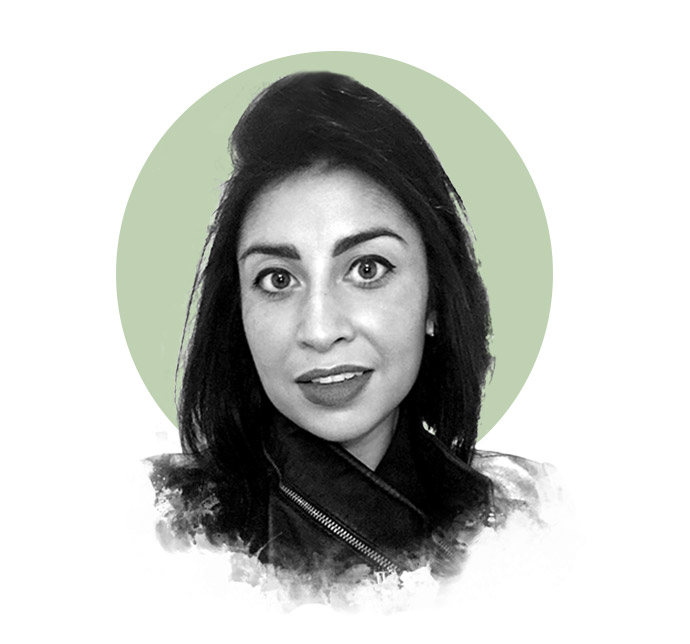
Sinead Good
Director of Operations
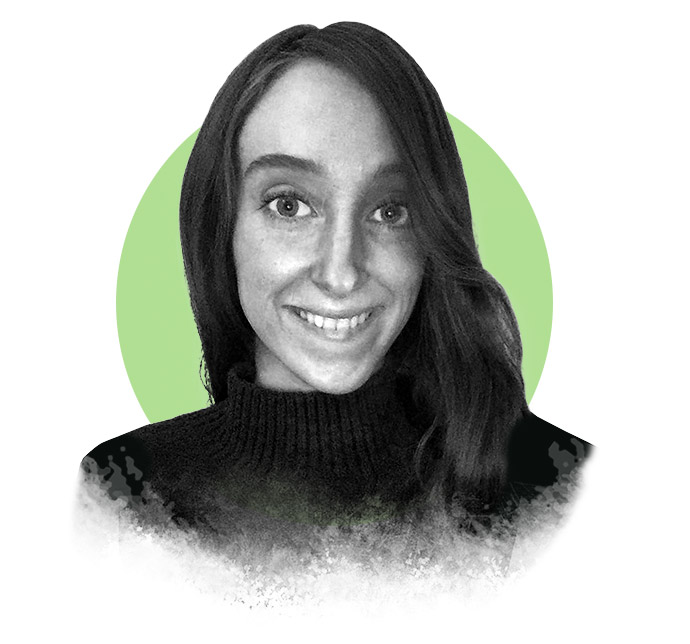
Helen O’Riordan
Product Manager
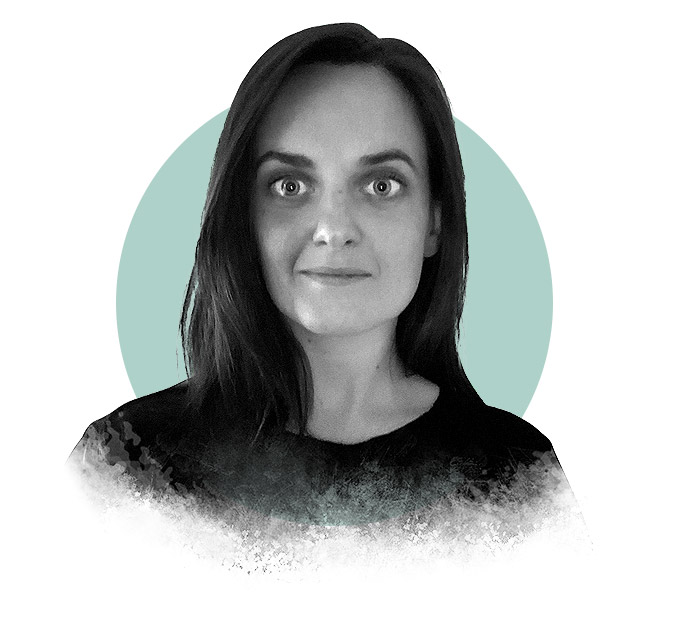
Sinead Chambers
Project Manager
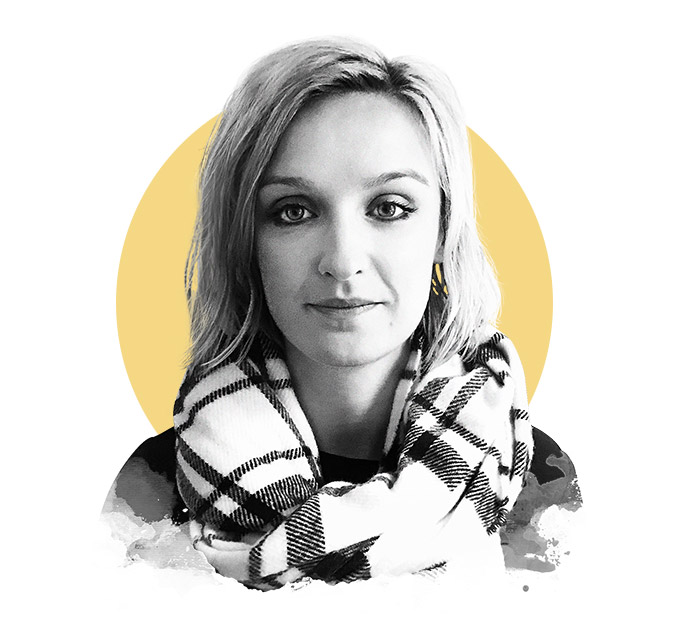
Mary Brennan
UX/UI Lead
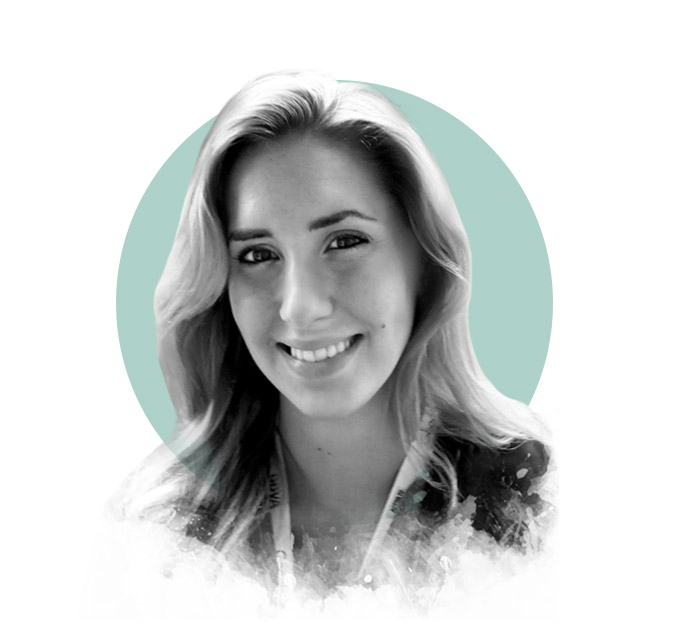
Lau Canal
Client Lead
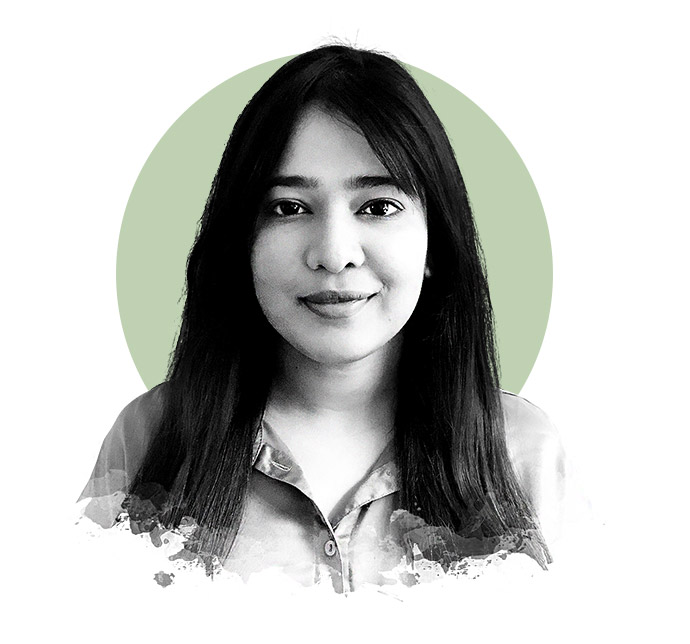
Suganthini Krishnan
UX/UI Designer
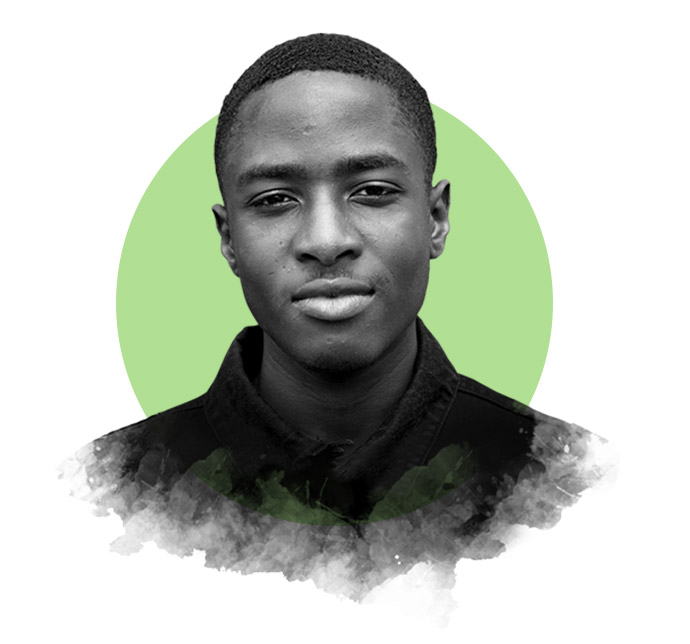
Olawale Akigbogun
UX/UI Design Intern
Pull up a pew as we talk to Dermot O’Shea, who founded WONDR seven event-filled years ago. Are you sitting comfortably? Good.
By the way, I wonder who designed that chair you are sitting on? Somebody did. These days somebody has to design almost every object and experience that we interact with. This may be a rather obvious truth, but it’s worth noting every now and again. It’s also a very relevant factor in the story of WONDR.
“In short, I wanted to be a furniture designer,” Dermot explains. Inspired by elaborate and Byzantine sculptures and the likes of Charles & Ray Eames, he headed off to a design college. It was, in digital terms, a more innocent era. “This is pre-internet now… zip disks were in fashion and the floppy disk was still there.”
Once ensconced in university life however, dreams of becoming an Irish Le Corbusier came up against reality. “The lecturer at the time was a very talented product designer who was on the TV a lot, he said, ‘Look, draw me 100 straight lines in less than a minute because I want to see how well you can draw.” The resulting output lacked the geometric symmetry required for such a rigorous taskmaster but all was not lost.
“He said, ‘Look, man, you’re never going to make it as a furniture designer but you seem to have some sort of get up about you. Have you ever considered working in this thing called branding and multimedia?’ So he sent me upstairs to talk to the lad who ran a course called ‘The Management of Design & Innovation’… And I said, ‘you know this sounds good for me’.
And good enough it was. “You learnt the principles of branding but you also had deeper modules in new media, architecture, graphics, interiors and then you would pick a specialism that you wanted to go further in. Mine was branding with multimedia.”
Digital Dublin
Not being able to draw a hundred straight lines led to a grounding in all of the elements that would be stored away and later used when setting up WONDR. Firstly though, there was a whirlwind trip through Dublin’s agency world, where people skills were every bit as important as the UX design experience Dermot was developing. At the time it was dawning on frantic account managers that this digital thing wasn’t some flash-in-the-pan fad. They and their agencies were going to have to adapt to survive.
As everyone does, I tried to get into the agency scene and had mixed experiences.
The head of the first agency Dermot approached looking for ‘a start’ (as they used to say on the building sites) was outraged at his apparent impudence. He suggested Dermot take a mop and bucket to the office toilets, once he was done he was welcome to F**k off. “Whoa, okay, that’s some intro to the industry. So maybe that prepared me for some of the other agencies I dealt with in the future.” Little did he know I had dealt with much worse on building sites in New York where I labored during my college years to pay for education. He seemed like a delicate flower to me.
When you have a start like that, the only way is up, “…but ironically, I didn’t give up and I spoke to other agency owners. Quite a lot of them gave me their time because they recognised I had an interest and a passion in the area. They gave me constructive advice on how to get started. So today, when people apply for jobs at WONDR – even if they’re not ready – I give them my time. I make sure I write a nice note. I’ll always go back and say, ‘Look, maybe you should think about this because this is how I got into it’. It’s almost like karma. Somebody was good enough to lend me a hand and I’d like to continue that philosophy.”
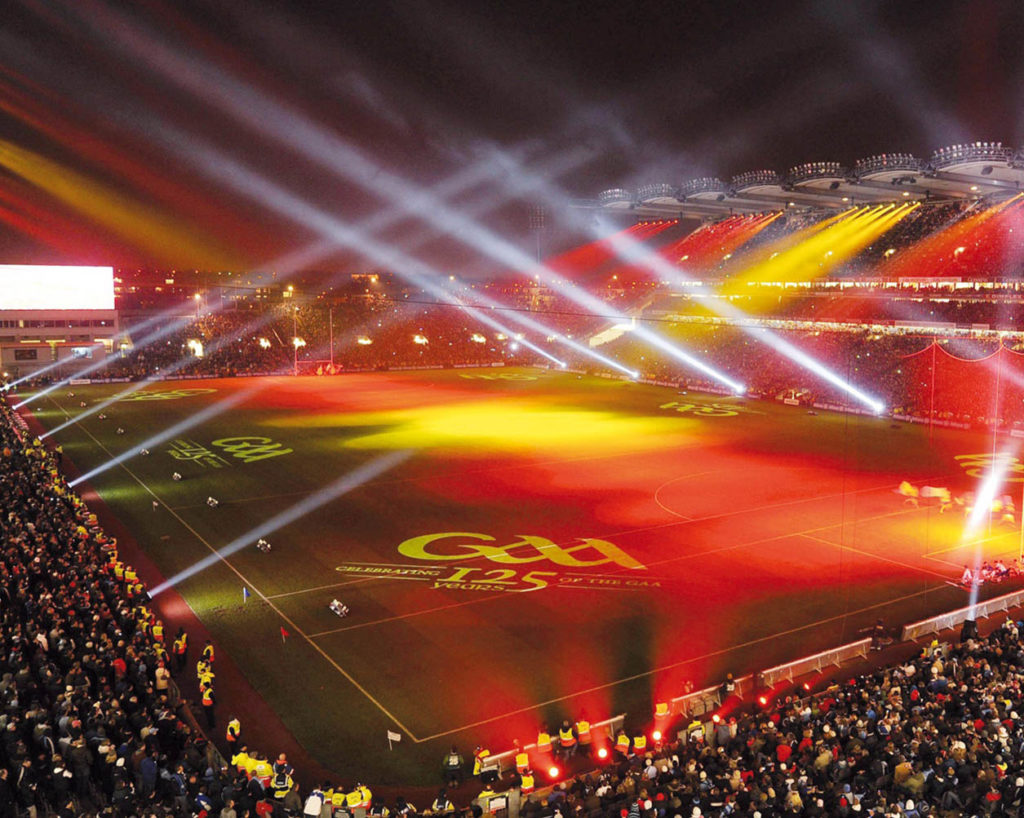
An All-Ireland Approach to Design
Industry stalwart J.P. Donnelly of Ogilvy suggested Dermot speak with Jim Dunne at Brand Union. That was a fortuitous meeting because it brought together a love of design and branding with a passion for the GAA, which was undergoing a major upheaval in its identity and how it presented itself to the world.
“It was very interesting because once I arrived in the Brand Union. I was put on to the GAA rebrand. This was a once in a decade project. I learned a lot from all the big strategy dudes there like Jim and Dave O’Connor about how to structure design and position the value it brings to organisations – even The GAA, which isn’t a traditional bank or insurance company. Design played a massive role in claiming back ownership of the brand from the likes of Guinness and the other sponsors who were almost kidnapping the GAA’s assets.”
While corporate sponsors are necessary and welcome in sports, for a community-based organisation like the GAA, it’s important that their identity wasn’t subsumed into the trappings of a massive sponsor brand. “Because of the way we had developed the design system, sponsors couldn’t come in and dominate because the GAA brand that we created was so strong.
Ten years on we wrote a lovely story about the GAA rebrand. The President at the time was Nicky Brennan – a great hurler back in the day, he read our article and got in contact with me just to reflect on the work and how it still looked as fresh today as it did then. Now you see the brand in nearly every Parish. It’s on the jersey. It’s on the medals. It’s everywhere… even tattooed on people’s arms, and you look back and think, we had a unique opportunity to work on a cultural identity for a special organisation. It won a few international awards, that was my first outing if you will.”
Nobody needs to tell Dermot about the importance of the GAA to Irish cultural life – something that goes far deeper than advertising hoardings, ribbon cuttings or banner ads. That patina of ingrained knowledge no doubt helped add a sense of integrity to the ambitious GAA rebrand project. Every kid in Kerry dreams of one day winning an All-Ireland medal, he just took a circuitous route to get his.
“Any accomplishment you ever achieve is nothing, compared to having an All-Ireland medal but, thankfully, I have an All-Ireland medal that we designed with Oisín Hurst, who is currently WONDR’s Director of Brand Strategy at the moment. So yeah, at least I have one myself.”
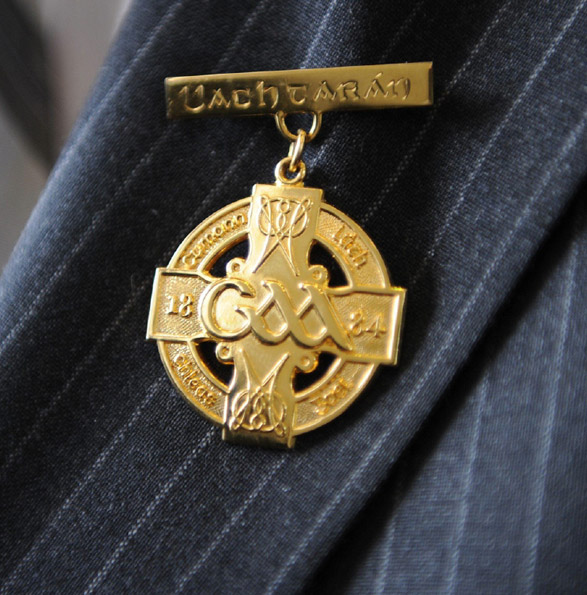
Looking back on seven years in WONDR throws up similar emotions and a sense of having created something that is also built upon integrity. In business, just surviving is an admirable enough trait, but to do so you need an ethos or a philosophy.
WONDR remains independent but when any business wins a few awards and gets a decent profile, people will offer you partnerships and takeovers, as Dermot explains. “When I founded WONDR, I wasn’t naïve enough to think that I knew it all… even though the technology was different, the stories are the same. If you talk to someone who ran an ad agency thirty years ago, or a brand agency or whatever, or a direct marketing agency, it’s the same shit, just slightly different deliverables. So, when I met all these guys, they told me the stories about how some of them had fallen for the trap of taking the money from that investor too early on or taking that free ride from an agency who would offer you a quick way into the market by working ‘in-house’. They all said two things to me; never sell and never scale.”
The problem with reaching a certain scale means that others will want to come in and manage the process. An external management structure can inject a certain order and, of course, cash. But somewhere along the way what makes the venture so unique in the first place can be lost. “Something we’ve done in WONDR from the start is that we have no accountants. The only accountant we’ve got is called ‘Xero’. It’s doing what departments of spreadsheet warriors do in these big agencies. I felt the moment you allow this spreadsheet engineering to dominate your culture, the sooner it can ruin it.
So everything in WONDR has always been about design first. It’s a place for designers and people who are excited by design. And anyone that doesn’t like design is not welcome.”
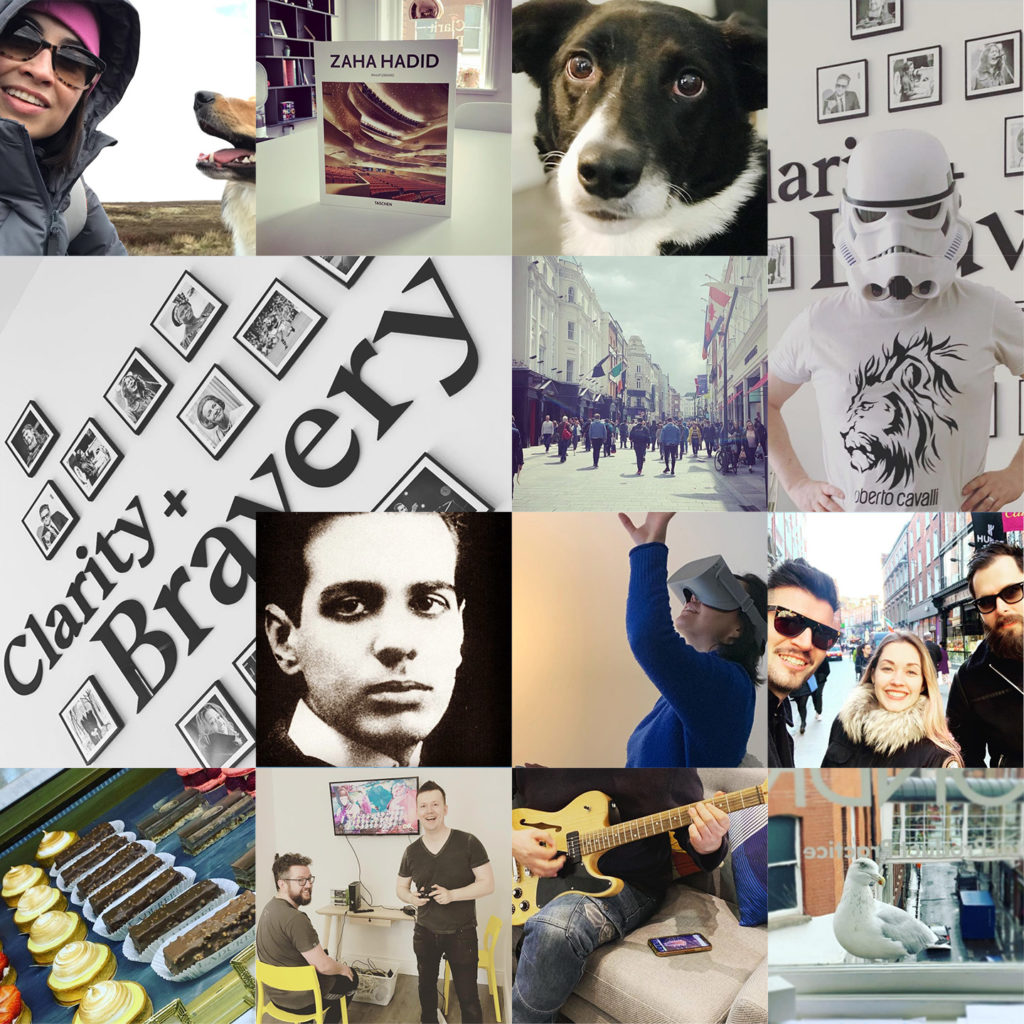
Culture Clash
Warming to the theme, we discuss how a creatively led design practice can retain that culture. The age-old clash between art and commerce naturally results in creative tension as these two worlds collide. This is not always a bad thing – tension can stimulate passion in the pursuit of great work. But the lines can get blurry after a while. Too much energy is wasted when the process intrudes to such a point that it’s a distraction from what everyone set out to build in the first place.
Anyone who works in a creative field will recognise that moment when a desire for control and order begins to restrict the very thing it was brought in to promote. That’s when you lose your soul. Some organisations get it right and some get it wrong and there are learnings in that too. Culture always has to triumph over corporate process if you are to have any hope of retaining an independently creative mind-set.
“To build a really cool creative business. It’s all about culture. It’s not about logos and it’s not about hierarchies or politics. It’s about culture. So we’ve spent a fortune on culture in WONDR. It’s what everything is about. For example we’ve had our own built-in library… that’s something I learned from Jim Dunne – the knowledge in books, keeping them everywhere because it changes the tone.
I worry sometimes we’ve all become monotonous humans because, back in the day, I’d go to my friend’s house and see his LP collection or CD collection. I’d see his books and I’d start to get it get a sense of the person. Whereas now, everything’s just IKEA furniture & iphones in people’s houses.
What I didn’t really understand at first was that culture does come from the top. And I know that’s a cheesy phrase that you hear, but I’ve really learned it because I’m really into design and doing things the right way.
So, sometimes in WONDR I’ll turn down projects. Or we’ll have been offered massive money to do something that just isn’t right or isn’t us. And we’ll say no. I always say to people; ‘always be true’. That’s why we’ve focused on clarity and bravery. Because you’ve got to be brave to not want to take the easy money and in some of those other places, when they take the easy money they sacrifice their culture.”
A WONDR Build
All this ambition is well and good but when did the idea crystallise to put all of this experience into setting up your own company with a philosophy based on these core learnings? Everyone has an opinion on what their business should look like and how it would work more efficiently. But not everyone steps off the escalator of a steady income to have a crack at it.
“Well, yeah, when I was working on my own I had a taste for it, even though I was only doing small projects. I liked just talking to people understanding what they were trying to do because our role is to be a storyteller, through words, through visuals, through technology. Then, I was working in a particular company where I felt like I was leading it. But because there was some idea that you can’t trust designers to run agencies, they always installed what I call accountants on top of me and these accountants would be following me around the place, asking ‘what do we do next?’
All they’re doing is counting the cheques. But I was the one doing the work until one o’clock in the morning. And one day, I was in with Fáilte Ireland – because at the time, I was working on the digital strategy for The Gathering.”
“Glancing at the crew assembled around a boardroom table the client asked, ‘Why are these people here when clearly you could just do this on your own? Why are you supporting all these people?’ And I thought you know what, this fella’s right. I’m going to do my own thing now. I’ve already built up the company for this millionaire and I have no equity. Yet because I’m interested in it I’m the one working until one o’clock in the morning three or four nights a week. So I made it a mission, then, to look at ways to get started.”
It was a short while later that my wife helped me make the final call and give me the final push to exit the big machine. We had just had our first child, we had bought our first home and it kinda made sense to throw in opening a new company into the mix just to keep busy. Her encouragement gave me the confidence to believe in my ability to do this. And the business is roughly the same age as our child so there’s a nice story in that too.
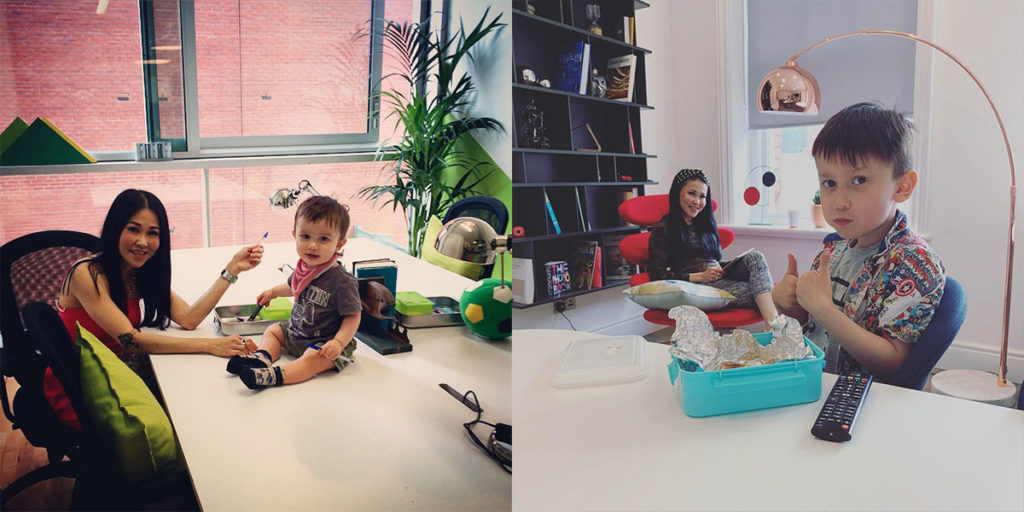
As it turned out, plenty of people were eager to make the same journey. You could sense in Dublin at the time a changing of the guard and a desire for an alternative to the stale agency model.
“I made a lot of friends over the years. I knew that there are enough talented people in Ireland, in individual companies that we could come together to form what I would call a super agency. One that could be as good as any company in Amsterdam, or New York. And that’s what WONDR was born out of. I was so tired of being compromised and giving up on creating something beautiful just because we needed to turn over money to keep all these people aboard the ship.
So, when we started WONDR, it was all about craft. And next thing you know, we were winning awards from these organisations, like the FWA and the CSS Design Awards, that no Irish company had ever won before.” (WONDR was shortlisted as a Top 10 Studio in the world by the prestigious CSS Design Awards in 2018). “For the first couple of years we focussed on our culture and creativity to almost… refresh the soul.”
Soul Food
Soul is that indefinable thing that you never seem to find on a brief or a planning document and yet it’s something that WONDR is passionate about. Why shouldn’t UX have a little bit of soul incorporated into it?
Soul is also something Irish people have in abundance and WONDR is a keen supporter of home grown talent. “In Ireland, there is an extremely talented creative community. I feel sometimes we have become so insular that we forget to showcase it. Why do Irish people do so well? We’re actually a very talented nation of storytellers, whether it be through music, poetry, design, copywriting or art direction. A lot of people now look at WONDR and say, ‘you’re doing work that’s much better than the big fancy place in New York’. And so, now, when I go to meet these companies, they’re just blown away.
The feedback from the market has been phenomenal. We’ve had a lot of interest from Singapore, from America and elsewhere.
And they are, I suppose, potential growth areas for WONDR and we are looking to branch out. I think if you can expand your mind-set and collaborate with different people it will keep you fresh and also keep you on your toes.”
The brand positioning of WONDR – the mission statement that greets you is “Accelerated Innovation comes from Clarity and Bravery.” What does that mean in practice? “Well, clarity is… it’s a couple of things. There are a lot of businesses out there and I won’t name them. But they love to create complexity, because there’s money in managing complexity. They promise the big machine of innovation and digital transformation. There’s a lot of bullshit in what they’re doing. It’s a philosophy of ‘create complexity / land-and-expand’. WONDR’s whole model is almost an antidote to that level of bullshit as I see it.”
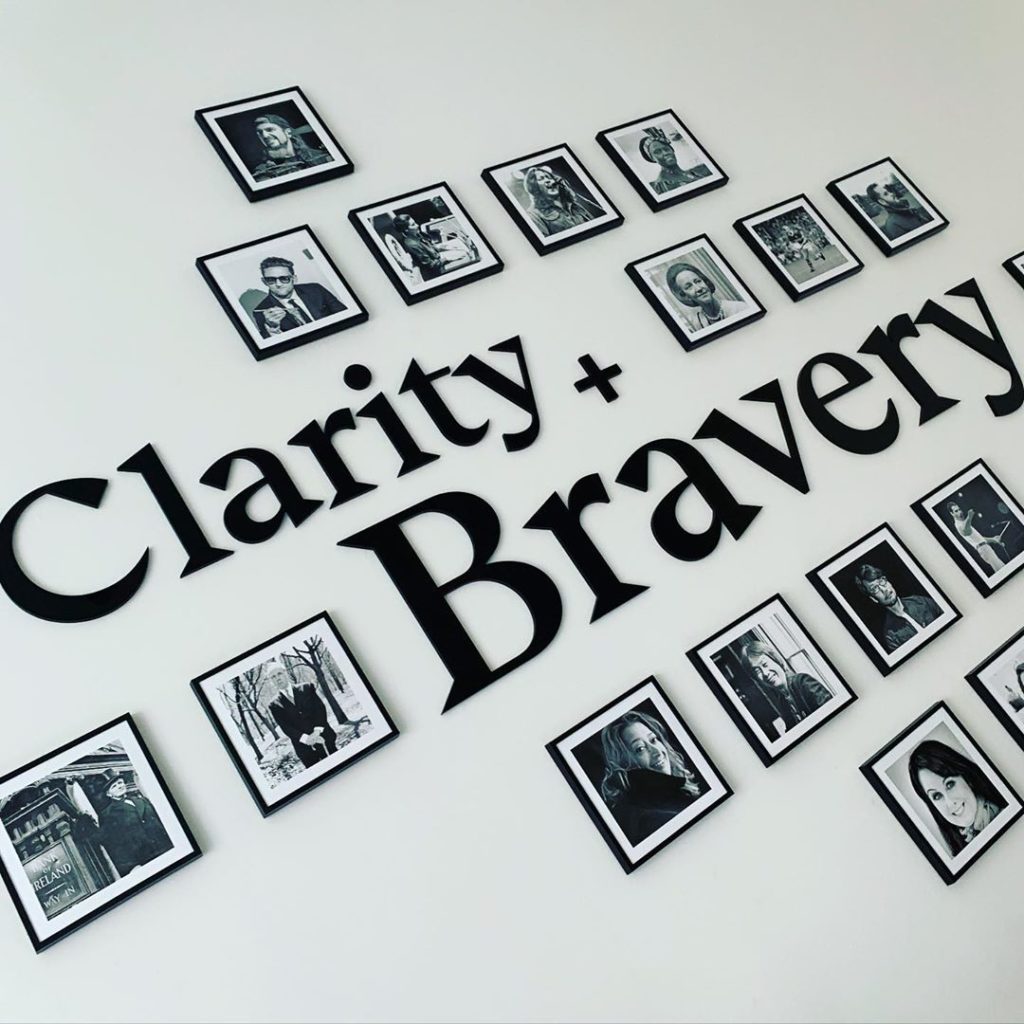
“Some people have described us as an anti-agency agency. It’s an interesting sound bite that keeps coming back to us because they can’t get over the level of honesty. I’ll say to clients, look, don’t spend your money here. You don’t even need to do this. You don’t need to give WONDR this… Just do this first – make some money, come back and then we can look at these things. And people appreciate that advice, because digital can be complex. And if people think digital is hard now, they need to consider that we are still in the early days and the easy part of digital. Wait till you see what’s next once AI and robotics take over!”
This thought encapsulates the sense that there is a digital world just around the corner that may subsume us. It’s reassuring to talk to someone who seems to know what the direction of travel is. There is another part of the WONDR philosophy and that is innovation but not just for the sake of it – in service to the underlying strategy as Dermot describes it, “The other part, then, is bringing that clarity and being brave enough to innovate. Being brave enough to change because the only people that are rewarded are the people that are willing to put their necks on the line. And time and time again, we’ll do that. But we have a way to back that up with data and science that we know – when we’re suggesting innovation – guarantees that it’s going to work”.
Power, Money & Politics
“First you get the money, then you get the power,” as Tony Montana memorably tells Manny in Scarface. The same principals apply to any business. WONDR seems determined to exert its soft power into a series of smaller boutiques, rather than an all-encompassing empire. It’s the “speedboat” versus the “tanker” to borrow a recent analogy from the European Union Commissioner, Ursula von der Leyen, Tankers are impressive but they are cumbersome and difficult to turn around.
“When you scale like that, the people who aren’t designers come into your company. And because they haven’t got any design to add, they focus on what I would call power, money and politics. And then that starts to bastardise your culture. So, everyone interviewed by WONDR, has to have a passion for design. What we’re looking for is that ‘can do’ mind-set. Those people who are culturally curious, people who want to discover something. If you want to be good, you’ll have a passion for it. You’ll find a way.”
To wind up, I ask how Dermot would describe WONDR to someone he was sat bedside at a dinner party with no knowledge of design, creativity, innovation or any of the things he is passionate about.
“The best way to describe it is – we help people make sense of digital. And we help brands find a way to make money through digital technology. That’s it. It’s a simple as that. Or, to be more accurate – like digital technology itself; it’s as simple or as complicated as you want to make it.”
Keep checking in for updates and the latest chapters to the WONDR story.
Sinéad joins us from Cartrawler where she was Head of Customer Operational Excellence. There she was responsible for the customer side of product management, project management and data delivery, combined to deliver a quality customer experience.
Sinéad’s industry background began in design and development, before moving into the project and operational management side of the business.
I am looking forward to helping deliver the strategic growth and expansion in WONDR's next chapter.
Sinéad GoodSinéad Good Opps DirectorJoining Ireland's top Digital Product Practice is an exciting step in my career. WONDR has a unique culture and approach to design and delivery. I am delighted to be a new member of their team.
WONDR
Sinead is one of 5 recent additions to the WONDR team as the business expands to partner with new clients on exciting missions. WONDR is currently working on the launch of a new bank in Barcelona, called 11Onze, defining & designing the long-term roadmap for the customer experience design across all touchpoints.
Our founder, Dermot O’Shea, added…
“Having been part of the team in Cartrawler for over 10 years, her experience & strategic advice will be invaluable for our plans in 2021 and beyond. She’s already making an impact and it’s already clear she will be a key member of our team going forward.”
WONDR has always been internationalist in its approach to digital products, hiring staff, and in its outlook – absorbing and drawing inspiration from the best from international design to constantly feed our cultural curiosity.
There’s a lot of synergy between the Catalan people and the Irish people, and as it happens, between Catalonia and WONDR. So we are delighted to be working closely with 11Onze on their launch.
It marks another stage in our development as we deliver a high-profile product into the Catalan region and beyond. Our vision is to work on a series of digital products across the globe from Dublin, whilst providing on the ground team members to support. In doing so we hope to spread our ethos of ‘innovation through clarity and bravery’.
Delivering digital products in beautiful Barcelona allows us to attract an even greater pool of talent & clients.
Dermot OShea FounderGoing beyond Ireland will also perpetually reinvigorate what we do here in Dublin, where we continue to design meaningful products and exceptional digital experiences (dismantling needless complexity as we go).
It’s been a challenging two years since we last got to visit one of our favourite conferences, Awwwards. We decided to recap on our last visit as we look forward to next years event, fingers crossed it happens.
AWWWARDs was last held in the beautiful city of Amsterdam. Over two days we heard from designers, developers and studios from around the global digital community, bringing us their insights and opinions on product and experience.
Design Systems
We heard from many people on the topic of design systems. This is something we at WONDR are really passionate about. Designing less for transaction and more for clarity and human experience , in order to secure better conversion is core to our values.
Bravery is something we value at WONDR for every product— setting a global benchmark for our work and communicating a vision to our client partners, like in the case of Pet Drugs Online, where considered design systems were applied to create one of the best performing Magento websites in the world.
Our take? Experiment more, think braver and be better. We have the opportunity and capabilities and visions to create something that goes beyond the template and push the boundaries of what’s possible.
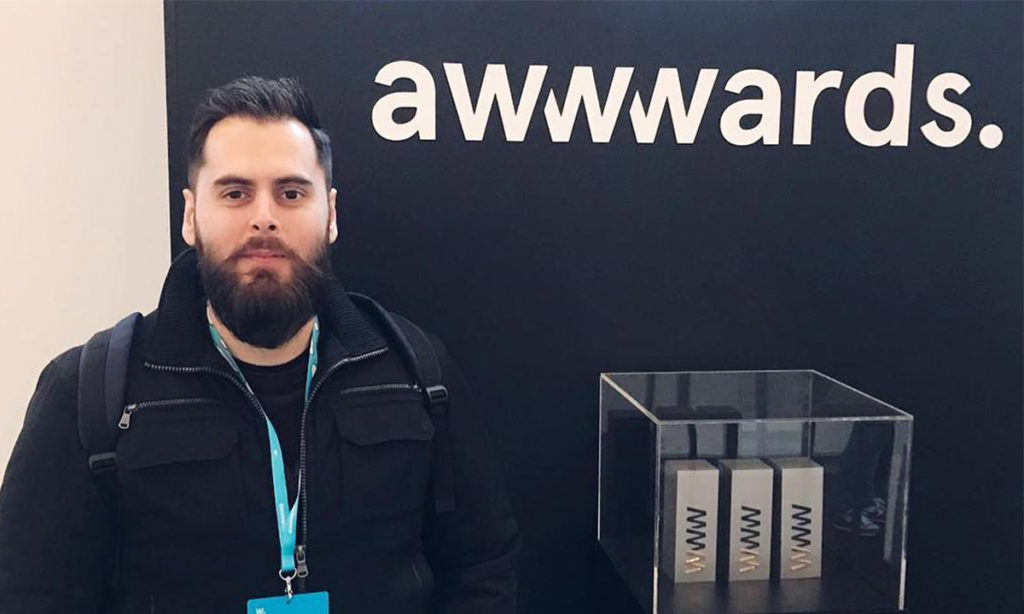
Mobile loading speeds
An interesting point raised, and one that comes up time and time again was around mobile loading times.
We think mobile first here at WONDR and are always conscious to optimise load times but we are wary of media companies who spout scary stats that often don’t take techniques we employ such as lazy loading into consideration.
Blindly following media stats can limit creativity and experience, things we don’t sacrifice. Being clear, concise and useful with our content and prioritising the most important information first is something we practice, so we can be free to create the best experiences for users. So while speed is important, we never abandon creativity or the brand experience.
Never compromise your brand expression
We saw some great examples of how studios are finding some interesting ways to overcome technological limitations. We firmly believe brand expression should never be a passenger to technology. Never give up on your creative idea because with some outside the box thinking it’s possible to find a creative solution for our problems.
Optily (formally Bionic) is the only single-click ad spend optimizer for eCommerce. Their platform assists eCommerce businesses in spending smarter with instant recommendations across Facebook, Instagram, Google Search, YouTube & Google Display Network.
To help them launch this innovative new platform and expand into the US market, the team at Bionic tasked WONDR to help them realise a 360° rebrand, encompassing naming, identity, visual language and digital experience.
Oisín Hurst Director of Brand StrategyWe've been collaborating with Optily for a while now, so we know well what the product can do for brands. This made it easier for us to deliver a new platform that will help them expand globally.
WONDR
The result is a new digital platform that has been built on WONDR’s CMS which enables the Optily team to editorialise their site as they see fit. WONDR also provided a design system that inspired and guided Optily’s internal teams. It is now used as a guide to design their wider suite of products, from videos to social advertising.
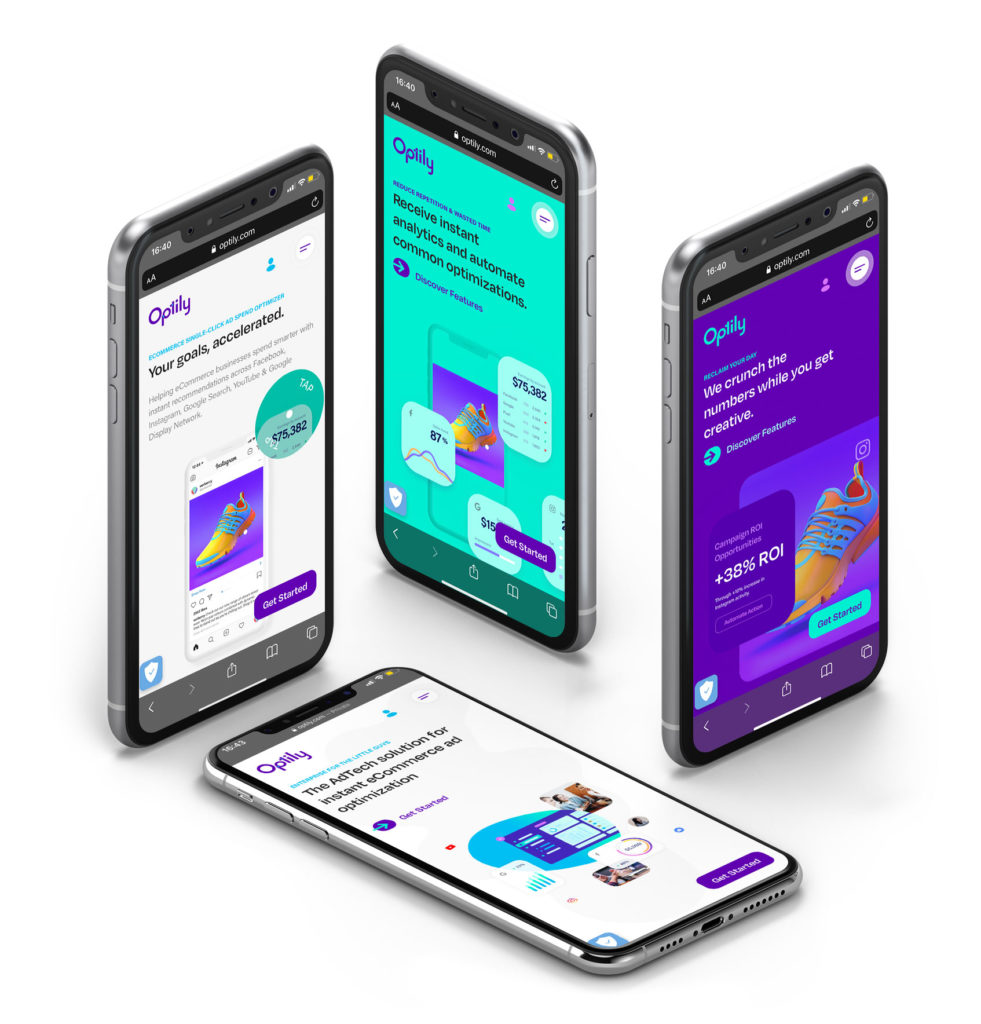
You can see the full details of the project here.
Arnotts are a well known Irish brand who have been around for a long time but with a little help from ourselves at WONDR, they have significantly increased their online revenue while transitioning to a new e-commerce system.
While many e-commerce projects focus on the system, we as a team also spent a significant amount of time focused on the role that the brand needed to play. Our Director of Creative Brand Strategy, Oisín Hurst, reflected on what it took to revamp the brand through the new ‘Salesforce E-Commerce Cloud’ platform.
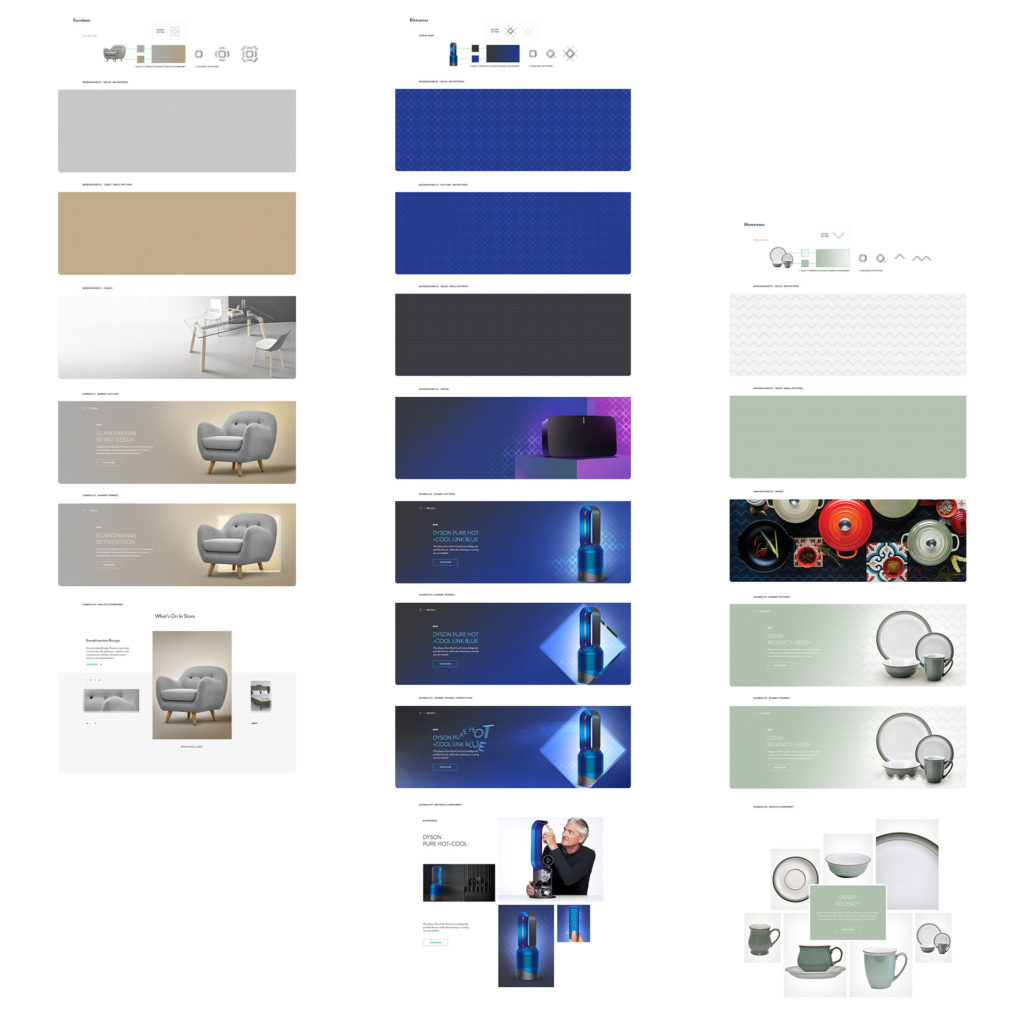
Where did you start?
From a creative standpoint, working into a system like Salesforce E-Commerce Cloud is an interesting challenge. It’s a beast of system. It’s very established, robust and complex. It’s serious stuff. So one of the first things we did was to look for benchmark examples.
To see what brands and websites that had taken this technology, this platform, and created truly exceptional, branded experiences. That was our aspiration for ourselves and for Arnotts. So as a starting point yeah, benchmarking seemed to make sense.
‘Seemed to’ sounds like it didn’t pan out.
Well, it did and it didn’t. What we found was very few brands were achieving anything remarkable. Instead the platform was constricting them creatively. They were system shells. Pure merchandising and little else. The brands, even luxury ones, just poured in imagery, type and colour. It’s a little bit daunting to be honest.
When you see famous brands fall into this trap it certainly gives you pause for thought. Like, if it’s good enough for these big guys…
Why isn’t it good enough? Is it really an issue given Arnotts is a retail brand?
Absolutely. Firstly, a brand should never feel like a passenger on its own website. Premium retail experiences should have depth, not a veneer of brand presence. The UX, UI and underlying technologies need to lean into each other. From a UI perspective, the brand needs to be part of the website’s DNA, it should be a part of the building blocks, not just the paint at the end.
Also, unlike the examples we were finding, we couldn’t rely on seasonal campaign assets to do all the heavy lifting. Instead we needed to have a scaleable branding asset. Something that could work as a building block and extend into a full and rich design language. But it had to be very flexible.
It had to work during sales and promotions, integrate with imagery, act as a texture, be a box, be a pattern, be loud, be subtle, work online, work on social. It had to work for €4k earrings and a €10 potato peeler with equal credibility.
You’re talking about the ‘chisel’.
It’s an awful name for it, but yes.
Where did it come from?
From the store. Literally it came from the physical store. We were looking around for a piece of visual heritage or inspiration to help us. We couldn’t build from the brandmark because at the time that was being redesigned by another team, so we went to the store and just walked around, looking.
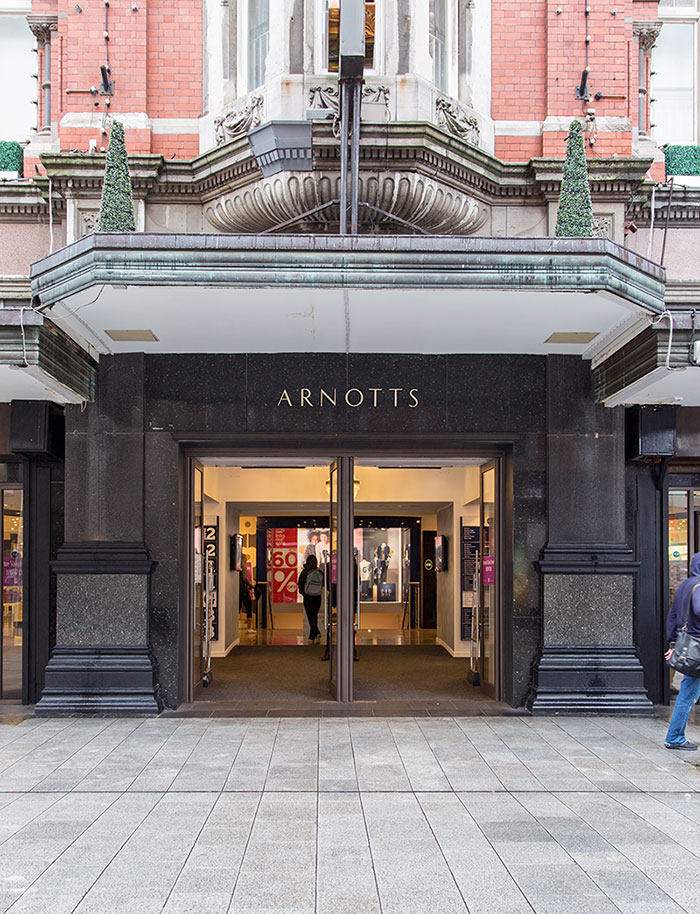
What did you see?
Well for the first while nothing popped out. It’s a really interesting building. On the Henry Street side its architecture is Victorian, on the Abbey Street side it was originally Art Deco, but it’s been heavily reworked.
It’s like these two different eras had been smashed together and then hollowed out. But still dotted around the store, from both sides, there was one shape that kept on repeating. This kind of chamfered, or chiseled shape.
So we decided to take it for a walk. I got back to the office with a few sketches and just started to play with it, as a ribbon, a box, a border, as glass, as 3D etc etc. As a creative solution it quickly proved its potential.
In the end I think it worked for two reasons. Firstly, because it was literally ‘of the store’ it reflects, and connects to the physical experience of Arnotts. The website feels like the brand, not an extension of it, or the digital side of it, but just the brand.
And secondly?
It was so simple.
In the week that WONDR celebrated its 7th birthday, we were recognised by the Insititute of Designers of Ireland as having designed the best website at their annual IDI Awards 2020.
The awards showcase exceptional Irish design across digital, fashion/textiles, product, visual comms, structures & spaces. Due to the current pandemic there was no physical awards ceremony, however there are plans for a meetup later in the year.
We’ll be picking up our specially crafted IDI Winner trophy next week.
Dermot O'Shea WONDR - FounderIt was the perfect way to mark our 7th birthday with an exciting award win for an exceptional global brand. We're building something special here in WONDR and we're looking forward to what 2021 will bring.
The Institute of Designers Ireland (IDI) has shortlisted 4 of our entries in the #IDIAWARDS2020. The awards showcase the best in Irish design across fashion/textiles, product, digital, visual comms, structures & spaces.
We’re obviously honoured to be shortlisted and we’re looking forward to the awards night itself.
Where exceptional work is determined
Best Site
Best Site
Our work with our friends in ftrprf for Google Cloud was also shortlisted for Best Website Design.
Animated Short Film
Animated Short Film
Our Director of Creative Brand Strategy, Oisín Hurst, created ‘Saor’ which was shortlisted for Best Animated Short Film.
Best Experience
Our work for CCSDA WOTY was also shortlisted for Best Experience Design.
Born on the 24th August 1899 in Argentina, Jorge Luis Borges was an iconic and unique thinker who created magical stories in his writing. Borges had a strong connection with Ireland formed through his passion and interest in famous Irish writers like Oscar Wilde & James Joyce.
Many stories have been written about his links to our nation, including an article by Newstalk who noted as a result of this affection for the country and its authors, his works are littered with Irish references. In his short story ‘The Shape of the Sword’, the protagonist is from Dungarvan, while in ‘An Examination of the Works of Herbert Quain’, the story opens with a line that states that Quain recently died in Roscommon. Similarly, the story ‘The Theme of the Traitor and the Hero’ also takes place in Ireland, set in 1824.
We took inspiration for our name from his short tale ‘UNDR‘ in the Book of Sand. UNDR we took to mean wonderment which we shortened to WONDR.
We took inspiration for our name from his short tale 'UNDR' in the Book of Sand. UNDR we took to mean wonderment which we shortened to WONDR.
When we had our first premises we converted a shop into our creative hub and had a display window facing the main street which contained pictures of the man. Often we would get travellers, particularly Argentinian & South Americans, who would stop by to ask about the story how a picture of Jorge came to find its way there. We were more than happy to tell them.
When you visit our Practice on Wicklow St you are going to see constant reference to the UNDR story and ‘The Mirror and the Mask’ also from the book of Sand. Each room in our building takes its names from the stories. For example, our main creative studio is called Olan. Skald is our second studio. Uppsalla is where we meet to converse and eat. You get the picture.
Our main boardroom is named, Borges, after the man himself where you’ll find the portrait from our old shop window but also a portrait of him as a young man.
This picture of Jorge at the age of 21, captures a young man who had the clarity to define a vision and forge a brave path that led him to inspire many generations of writers and creatives like ourselves.
We thank Jorge Luis Borges for showing us the way.
To celebrate his writings our Brand & Strategy Director, Oisin, created a series of short videos to capture the mood, landscapes & visions painted in Jorge’s words. One day we plan to make this into a much richer experience to bring these stories to life in a new digital journey.